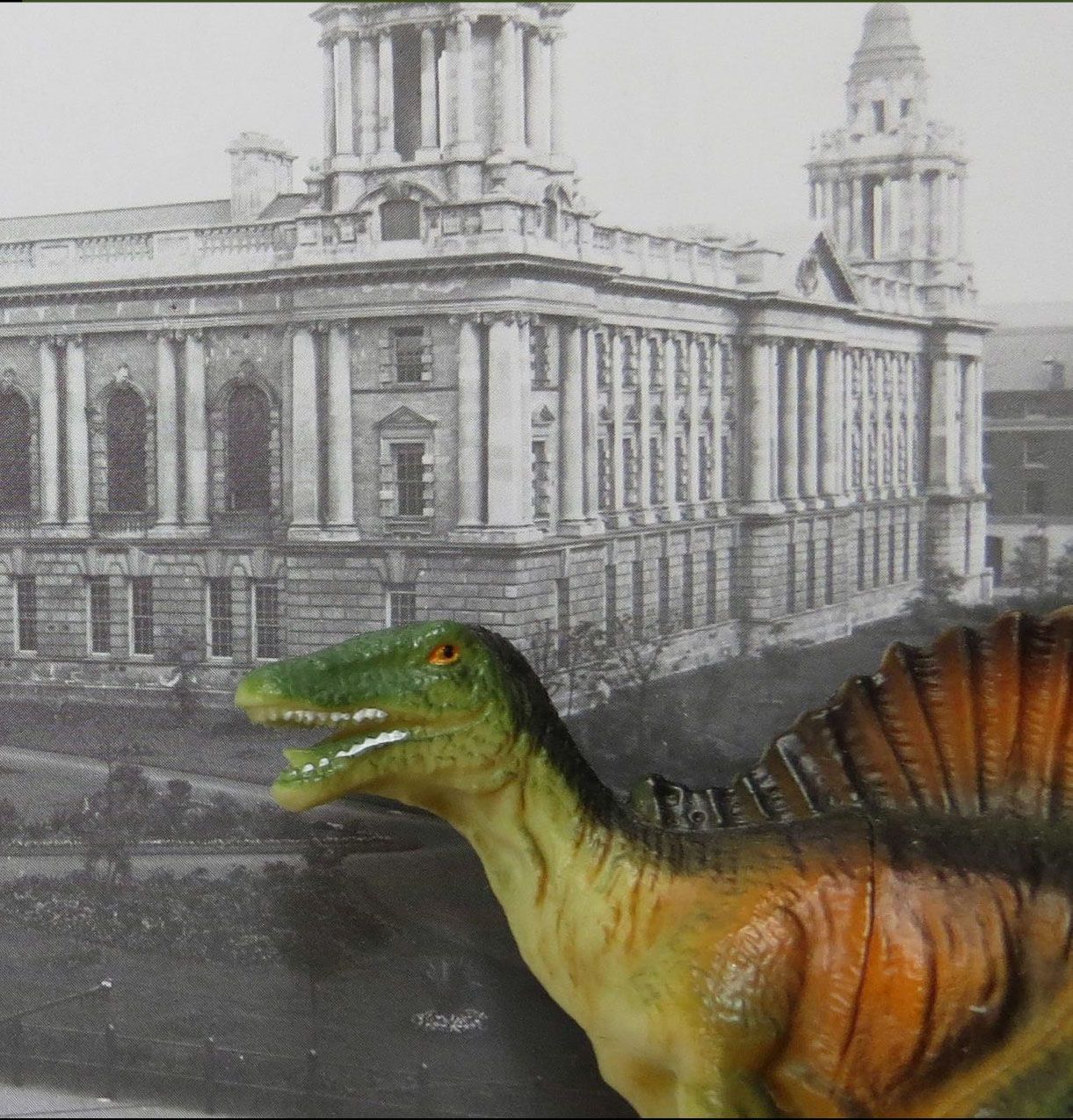Belfast With Dinosaurs by Martin Connolly is published by Shanway Press (RRP £12.00)
THIS bizarre satirical novel’s opening line – with its local vernacular – promises the reader two things: Firstly, a story concerning the pre-historic beasts that millions of years ago ruled the Earth; and most importantly, a Belfast story.
Professor Martin Connolly, who teaches UK and Irish literature at Tsurumi University, Yokohama, and creative writing at Keio University, Tokyo, fictionalises the significant 1980s discovery of the fossilised remains of two separate Jurassic dinosaurs in Islandmagee on the Antrim coast, by school teacher and fossil collector Roger Byrne. Connolly takes the creative liberty of unfolding the reimagined event amidst the raging ‘Troubles’.
An unexpected societal chain reaction is provoked when eager rookie News Letter journalist Ivan Stacks gets duped by a pair of prankster Queen's University palaeontology students into publishing a bogus story, suggesting that the recently unearthed dinosaurs had died ferociously fighting one another.
Word spreads fast in Belfast, and so, almost overnight, Stacks’ 'Duelling Dinos' become a farcical metaphor for the conflict – causing a great deal of chagrin for the renowned German palaeontologist from Heidelberg University in charge of studying the discovery.
The growing consensus, that this tale of primeval territorialism and brutality exemplifies Northern Ireland’s turbulent socio-political climate, leads the Belfast public to comically verbalise their frustrations. Humorous escapism allows for an unlikely respite from the conflict. Patrolling British armoured Saracens become “Triceratopsian” in appearance. At beloved watering-holes The Garrick and The Rock Bar over frosty pints, customers engage in jovial political role-playing. Here they cast one another as the carnivore Megalosaurus or the herbivore Scelidosaurus – now designated their own political and religious persuasion. Naturally, Belfast colloquialisms abound.
This vignette-like depiction of the complex linkage that is Belfast, with its host of interconnected characters from all walks of life, is akin to a tapestry, past, present and future, interwoven, not only by the threads of atavistic callousness, but above all, by cherished moments of levity and hope amidst the chaos.
Connolly’s reliance on this subversive humour serves a dual-purpose: Firstly, it illustrates the people of Belfast’s capacity for resilience via sarky, relentless wit; secondly, it is a lens through which we might re-examine our extremely complicated, painful past.
The unorthodox and unpredictable multi-perspective narrative portrays the myriad standpoints, Catholic and Protestant alike, that characterised the zeitgeist of Troubles-era Belfast – the legacy of which is manifestly felt today.
This vignette-like depiction of the complex linkage that is Belfast, with its host of interconnected characters from all walks of life, is akin to a tapestry, past, present and future, interwoven, not only by the threads of atavistic callousness, but above all, by cherished moments of levity and hope amidst the chaos.
Additionally, this is a novel intended as a labour of love for Belfast that features autobiographical elements. Connolly, who has lived in Japan since 1991, presents his alter-ego, 16-year-old CBS student Christopher Maguire, as the book’s heart.
The boy too uncovers an avenue of escapism in the ‘Duelling Dinos’ – at one point dreaming of them black balaclava-clad, clashing in the streets of the city centre. Particularly through his perspective do we find ourselves transported back to late 1970s Belfast.
With unashamed nostalgic gusto, Connolly meticulously reproduces the city’s landscape. From its iconic nooks and crannies like the narrow alley of Pottinger’s Entry, and stores such as Fresh Garbage, to the Floral Hall on the zoo grounds, and the long-gone Barry’s Amusements, finally ascending to Napoleon’s Nose overlooking the city.
Growing up during such a tumultuous period, rather than succumb to despair and apathy (despite their religious differences and subsequent distance) Christopher and his friend Michael find a modicum of solace in cinema and music alike. Northern Ireland “ceas[es] to exist” at the Capitol Cinema on the Antrim Road while Christopher Reeve’s Superman, a beacon of hope, soars on-screen; and in an era when Terri Hooley’s Good Vibrations record store was the place to be, artists such as Queen and Elvis Presley bestow the soundtrack of adolescence that drowns out pandemonium.
Belfast has endured, but it is collective introspection and representation that will continue to turn the wheels of progress towards a hopeful shared future.
It is Connolly’s literary background that is truly worn on his sleeve however. Christopher takes refuge in the worlds envisioned by writers such as H.G. Wells, Robert Louis Stevenson, and Jonathan Swift – whose Gulliver’s Travels was allegedly inspired by Cavehill’s ‘sleeping giant’-esque shape.
Christopher, much like his creator, a known scholar of James Joyce’s work, is inspired by A Portrait of the Artist as a Young Man. Not unlike Stephen Dedalus, Joyce’s fictionalised alter-ego who didn’t care for religion, he too finds his vocation in literature.
Ultimately, the novel, while unusual, aims to provide a dose of escapism and local insight for the malaise that still ails Northern Ireland. Through a dinosaur-oriented conceit, Connolly evokes the act of digging, an attempt to unearth a deeper understanding of a bloody past that we still feel in our resilient bones.
Belfast has endured, but it is collective introspection and representation that will continue to turn the wheels of progress towards a hopeful shared future.





